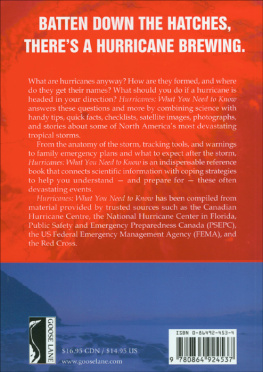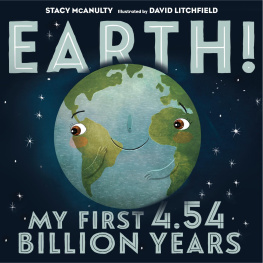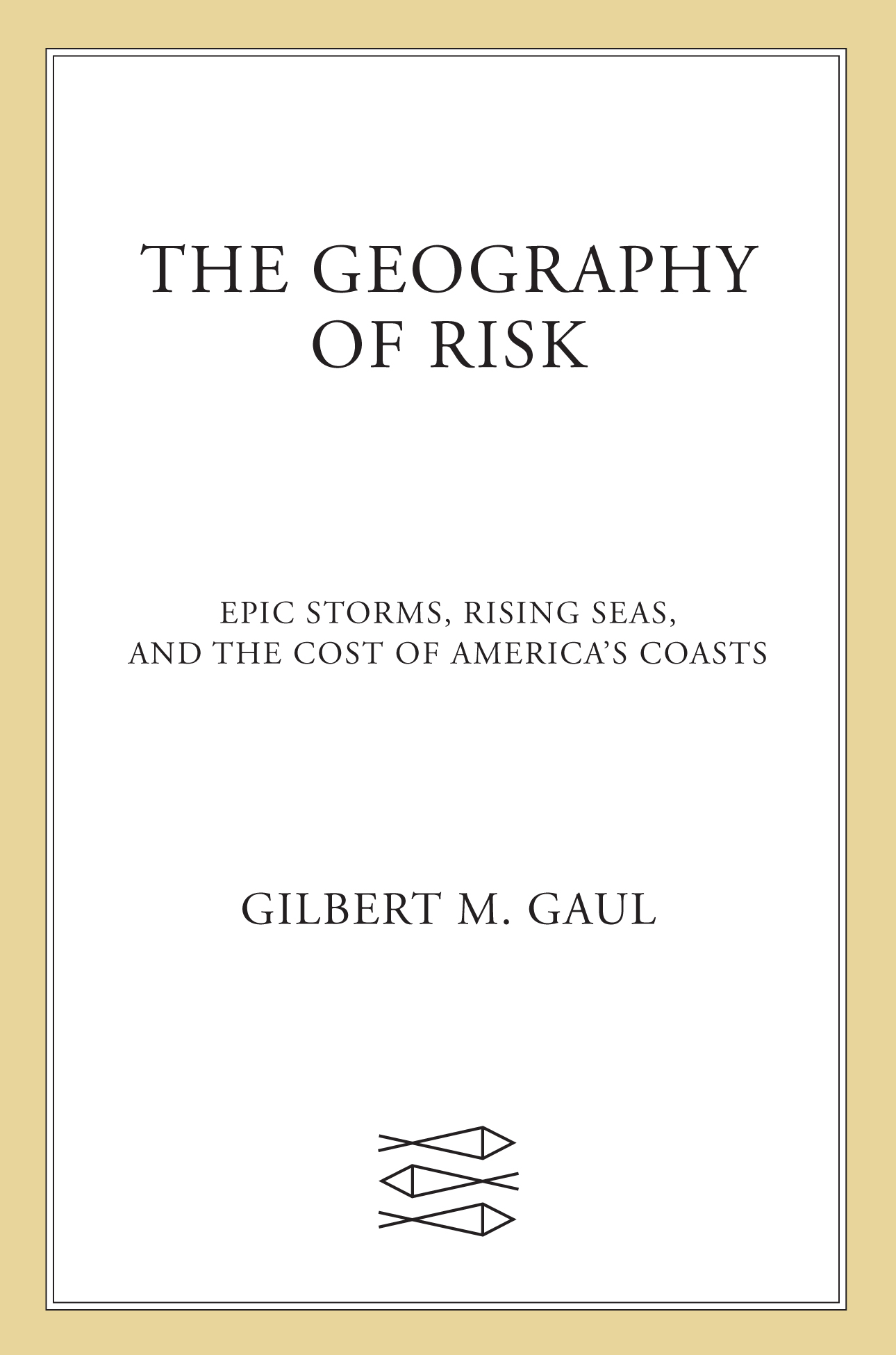The author and publisher have provided this e-book to you for your personal use only. You may not make this e-book publicly available in any way. Copyright infringement is against the law. If you believe the copy of this e-book you are reading infringes on the authors copyright, please notify the publisher at: us.macmillanusa.com/piracy.
The definition of insanity is doing the same thing over and over again and expecting a different result.
AUTHOR UNKNOWN
A WEEK BEFORE CHRISTMAS IN 1999, I met the acclaimed coastal geologist Orrin H. Pilkey on the Outer Banks of North Carolina, a more or less continuous spit of sand extending along half of the states four-hundred-mile coast. We had come to talk about erosion, hurricanes, and the relentlessly defiant pace of development along the states once-pristine shore. Billions of dollars of property now perched in harms way. Parts of Kitty Hawk, Kill Devil Hills, and Nags Head had lost entire rows of beach houses to the sea. Dozens of other houses now wobbled on stilts in the surf. Some industrious owners had placed mesh bags filled with giant boulders around the pilings. But these makeshift attempts at engineering provided only so much help. One by one, the houses toppled into the ocean or were condemned by the townsred-tagged, in the parlance of local zoning officials.
Its madness, Pilkey exclaimed as we examined a sliver of beach where two rows of homes were now underwater. I am sometimes condemned for saying this, but thats what it ismadness and hubris of unbelievable proportions.
Pilkey is a short, square hobbit of a man, with an unruly gray beard and a disarming sense of humor. Depending on your point of view, he is either a prophet or the Antichrist of the coast. For more than half a century, he has been churning out scientific papers (more than 250) and books (45 and counting) spotlighting the immeasurable beauty of barrier islands and the illogic of building houses on them. The mayor of a beach town in New Jersey once blurted, I hate him, hate him, hate him, after Pilkey pointed out that his shoreline was rapidly washing away. In 1991, the town of Folly Beach, South Carolina, passed a resolution condemning Pilkeys studies as insulting, uninformed and radical. Pilkey framed the resolution and hung it on his office wall at Duke University, where he ran the marine geology program.
Now eighty-four, Pilkey is retired, yet hes still challenging the often reckless development of the coasts and the billions in government subsidies and bailouts that normalize risks and encourage rebuilding in harms way after hurricanes and floods. The mayors and politicians like to call hurricanes natural disasters, he said. But in my opinion, theres nothing natural about them. They are man-made. Barrier islands are always moving. Beaches are always eroding. Its only a problem when you put a house there.
This is a book about water and riskthat is, how Americans live with water and accommodate its beauty, power, and fury. It grew out of my long-standing love affair with the ocean and what I have watched occurring at the coast over nearly seven decades. It isnt enough to say that rising seas and larger, more ferocious storms threaten trillions of dollars of property. What is equally critical to understand is how we arrived at this point, with so much at stake and so few good choices. Which human and economic forces propelled Americans to build in one of the most ecologically fragile and dangerous places on earthcoastal floodplainsand then reward those decisions without truly apportioning the risks?
What we think of as the coast is a relatively modern phenomenon. True, ancient peoples ferried across the bays and sounds to fish and hunt. And Gilded Age industrialists built Victorian mansions, hotels, and hunting clubs along the Atlantic and Gulf Coasts. However, developers didnt turn to the coast in earnest until the last century, when postwar prosperity enabled Americans to indulge themselves after years of sacrifice. Over the next few decades, a surge of second homes filled beach towns and communities along the ocean, gulf, and bays. That wave of development has only accelerated since, backed by an array of federal and state programs that provide inexpensive financing and tax breaks; offer heavily subsidized flood insurance; underwrite roads, bridges, and utilities; and distribute billions more in disaster aid to help beach towns rebuild after hurricanes and floodssetting the stage for a seemingly endless loop of government payouts. It isnt an exaggeration to say that without the federal government, the coast as we know it simply wouldnt exist.
One can fairly argue that it was an unintentional policy. After all, there was never a national debate about whether to develop the coasts. Critical choices were left to beach-town politicians, who controlled land-use, zoning, and building decisions and, unsurprisingly, favored development. Later, when state and federal officials tried to slow the unrestricted building, politicians and developers stiff-armed them aside. The result, this book argues, is one of the most costly and damaging planning failures in American history, with at least $3 trillion worth of property now at risk of flooding and catastrophic storms, and the U.S. Department of the Treasury serving as the insurer of last resort.
The costs are multiplying each decade. Hurricanes and coastal storms now account for sixteen of the twenty most expensive disasters in U.S. history, with well over half a trillion dollars in damage in the last two decades alonefar more than the damage caused by earthquakes, wildfires, and tornadoes combined. Worryingly, the pace of destruction is accelerating, with seventeen of the most destructive hurricanes in history occurring since 2000. In 2017, Harvey, Irma, and Maria resulted in over $300 billion in losses, the most in a single year. As I write, Florence is bearing down on an area of North Carolina that has been repeatedly pummeled by storms, yet is rapidly adding houses and people. No doubt the damage will cost taxpayers billions. Meanwhile, federally subsidized flood claims at the coast have increased twentyfold in the last two decades and account for three-quarters of all flood losses nationwide, effectively leaving the governments insurance program insolvent. Now, with rising seas, warmer oceans, and more property than ever before at risk, even more calamitous stormsand government payoutsare inevitable.
The most pressing question is, why do we keep repeating the same mistakes over and over? The development of the coasts is a peculiarly American expression of optimism, commerce, and defianceeven willful blindness. After each hurricane, Americans keep rebuilding, normalizing their risky choices. At least two million houses have been erected on low-lying barrier islands and bays in recent decades, many of them vacation homes and investment properties insured by the federal government. Surprisingly, some of the riskiest properties benefit from the most generous taxpayer subsidies, despite flooding repeatedly. Yet half a century after the government got into the business of insuring vacation homes at the beach, no one can explain how it happened, let alone whether it is an appropriate role. One can fairly argue it was an unintentional policy, and that the costs have been, and will be, astounding. Researchers have estimated that even a relatively modest one-foot rise in sea level will nearly double the nations flood losses in the coming decades. A more likely three-to-six-foot rise will bury over one million homes underwater, leaving them inaccessible, if not modern-day versions of the mythical sunken city of Atlantis.













